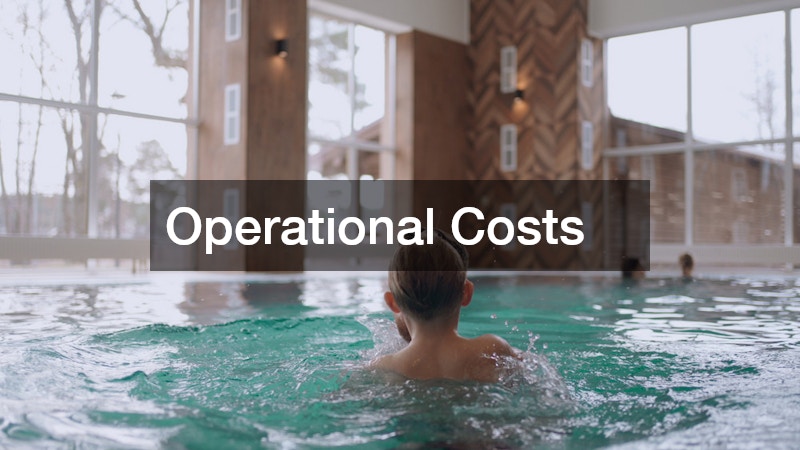When considering the perfect relaxation or exercise addition to your home, a swim spa or hot tub often comes to mind. But deciding between the two can be challenging. This article will help you understand the differences between swim spas and hot tubs and aid in determining which is best suited for your needs.
The Primary Differences Between Swim Spas and Hot Tubs
The Structure and Size
The structure and size significantly differentiate swim spas from hot tubs. Swim spas are generally larger, designed to accommodate a current for swimming and more people, whereas hot tubs are typically smaller and focus on seating a few individuals in warm, bubbling water. Swim spas combine a hot tub for relaxation and a space for swimming, allowing users to engage in aquatic exercises while enjoying therapeutic benefits.
Swim spas require more space due to their extended length, which facilitates swimming in place, often measuring between 12 to 21 feet in length. In contrast, hot tubs range from compact two-person models to larger ones that can fit up to seven or more persons, typically not exceeding 9 feet in length. Because of their size, installing a swim spa might require an outdoor setting or a larger indoor area than a hot tub.
Functionality and Purpose
Swim spas are versatile, offering both exercise and leisure functions, ideal for individuals looking to maintain their fitness through swimming or aquatic workouts. They generate a current that allows for stationary swimming, which is excellent for low-impact cardiovascular exercise. Conversely, hot tubs are primarily designed for relaxation, featuring warm water and jets that massage and soothe tired muscles.
While swim spas provide a space for continuous exercise without the need for a full-sized pool, they also serve as a social or family-friendly environment where fitness and fun intersect. On the other hand, hot tubs make for a peaceful retreat after a long day, promoting stress relief and social gatherings in a relaxing atmosphere. The therapeutic benefits of hot tubs are especially beneficial for individuals with arthritis or joint pain, as the bubbling water helps alleviate discomfort.
The Maintenance Requirements for Swim Spas and Hot Tubs
Cleaning Procedures
Maintenance is key for both swim spas and hot tubs to ensure health and longevity. Swim spas require regular monitoring of water chemistry and cleaning of filters, given their dual-purpose nature involving both swimming and relaxation areas. Regular maintenance may involve draining and refilling the water every three to four months to maintain optimal water quality.
Hot tubs require similar upkeep, with emphasis on balancing pH levels, sanitizing the water, and cleaning filters to prevent bacterial growth. The smaller size of hot tubs generally translates into less water to manage, making the cleaning process slightly less intense compared to larger swim spas. Both systems benefit from occasional surface cleaning to remove residues and maintain aesthetic appeal.
Cost and Effort
The cost and effort required to maintain swim spas and hot tubs can vary based on factors such as size, usage frequency, and environmental conditions. Swim spas, being larger, generally incur higher maintenance costs due to increased water volumes, requiring more chemicals and longer cleaning times. Hot tubs, with smaller water capacity, may require fewer resources and therefore present lower maintenance costs.
Both options require regular water testing and chemical adjustments to ensure safe and healthy usage. While hot tubs might take less effort due to their smaller size, they still demand time and diligence from owners to avoid bacteria buildup. Swim spas, due to their extensive functionality, might necessitate more detailed maintenance routines and possibly professional services for specific repairs.
How Costs Compare Between Swim Spas and Hot Tubs
Initial Purchase Price
Investment is a significant factor when choosing between a swim spa and a hot tub. The initial purchase price of a swim spa is generally higher due to its size and complex features that accommodate both exercise and relaxation. Costs can range from $10,000 to over $50,000, influenced by size, brand, and additional features.
In contrast, hot tubs present a more modest investment with prices starting around $2,000 and extending up to $15,000 depending on quality and features. Features like advanced jet systems, built-in lighting, and audio components can increase the cost of hot tubs significantly. It’s essential to evaluate what features align with your needs and budget before making a purchasing decision.
Operational Costs
Operational costs, which include energy consumption and water management, are another crucial factor to consider. Swim spas typically incur higher energy costs due to their size and the need to maintain a consistent water current and temperature. The monthly operational expenses can vary significantly, from $50 to over $100, depending on usage and climate.
Hot tubs, on the other hand, usually have lower operational costs because they require less energy to heat a smaller volume of water. Monthly expenses might range between $20 to $50, again varying with usage, insulation, and local energy rates. Regular maintenance and efficient energy practices can help in managing these costs effectively.
Both swim spas and hot tubs bring unique benefits to your home. Whether you are looking more for therapeutic relaxation, a family-friendly aquatic exercise environment, or a combination of both, your final decision should align with your lifestyle, budget, and available space. By evaluating the differences highlighted in this article, you can confidently choose the option that enhances your home experience.

